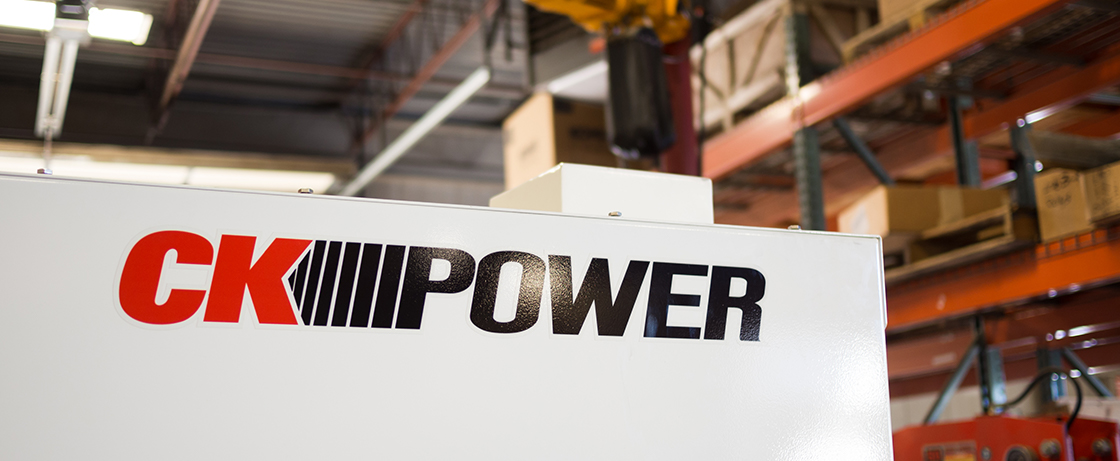
All diesel generators are susceptible to wet stacking — and all the performance problems it causes — if operated at low loads for prolonged periods of time.
Tier 4 units are even more vulnerable to the effects of wet stacking than older models.
Long story short? Underloading Tier 4 units leads to wet stacking and serious maintenance issues; the best way to prevent this is by sizing your generator appropriately for the loads it will be carrying.
For the full story, keep reading.
A quick primer on wet stacking
Wet stacking refers to the buildup of unburned fuel on the cylinder walls, and throughout the exhaust system. You can visually detect it by looking for thick, black liquid in the exhaust pipe. This liquid is the combination of unburned fuel (soot) and exhaust.
It’s caused by light loading your generator
Generators need to operate at relatively high temperatures in order to completely vaporize and burn diesel. When run under light loads, less fuel is atomized into the combustion chamber, less heat is generated and, because of this, some fuel is left unburned.
The unburned carbon then travels into the exhaust system, coating the valves, turbo charger and exhaust stacks in soot, causing poor performance and premature wear of these components and the engine overall.
It can also coat the fuel injector nozzle, compromising its ability to adequately inject fuel into the combustion chamber. Affected injectors introduce droplets, not an atomized mist, into the combustion chamber — and droplets don’t burn as efficiently. This, in turn, further lowers the combustion temperature and allows more unburned fuel to migrate into the exhaust system.
In this way, the presence of wet stacking results in further wet stacking — causing more and more serious engine damage over time. Ultimately, if left unchecked, it will escalate to permanent damage or complete engine failure.
Tier 4 generators are even more susceptible to wet stacking
The EPA started phasing emissions regulations for off-highway diesel power equipment in the 1990s. As you know by now, the latest iteration — Tier 4 Final — sought to reduce the emission particulate matter (PM) and nitrogen oxides (NOx) by 90%.
To meet these regulations, diesel technology had to change.
And while the in-engine improvements and the addition of advanced emission control systems (which are fully explained in this article) have made Tier 4 units more efficient, they have also made these units more vulnerable to the effects of light loading.
One such improvement that affects this is the exhaust gas recirculation (EGR) system found in the aftertreatment system of most Tier 4 units. It diverts some exhaust back into the combustion chamber, which replaces a portion of oxygen with carbon dioxide and lowers the peak combustion temperature.
This is great for the overall fuel efficiency of the unit — and it even reduces its cooling needs, allowing for size reduction of the radiator.
But it also means that, generally speaking, Tier 4 units need operate under higher loads (typically at least 75% nameplate rating, and preferably never below 60%) to reach the temperatures necessary to prevent wet stacking. When underloaded, the longevity of the generator is threatened.
Sizing generators correctly for your application

Wet stacking prevention begins with sizing your generator correctly. And the most important piece of sizing advice we can give is this:
Don’t underload your generator by overpowering your application.
On the surface, it seems to make logical sense that a 100-kW generator is a safe option for an application that requires 40-50 kW of continuous power. After all, a 100-kW unit gives you the flexibility to add more loads as needed.
But if you overpower your application in this way, you’re all but guaranteeing you will underload your generator by continuously running it at 40-50% capacity. Over time, this can cause wet stacking, premature engine wear and system failure.
Instead, you should work with a manufacturer or rental company to size it in a way that prevents underloading and, therefore, wet stacking.
Generally, this requires you to add the starting power (the power required when starting motors) and running power (the power required to continuously run) of all the equipment you will be loading onto the generator, and then tack on a 10% buffer.
Then your generator manufacturer will help you select a generator that serves your power needs — and won’t wear out prematurely.
A note on load banking
If wet stacking is left untreated for long enough, the only restorative solution is an engine overhaul. But auxiliary load banking, as well as regular load bank testing, can serve to prevent wet stacking and treat the beginning stages of it.
Automatic auxiliary load banking is used in prime power applications. Essentially, this system automatically throws an artificial load onto the unit in situations when the generator is underloaded.
Regular load bank testing is an essential part of any planned maintenance contract for diesel generators. This is where artificial loads (of various percentages of the nameplate rating) are placed on your unit for extended periods of time. This serves two general purposes: To verify your generator’s capacity to serve its specified kW output, and to burn off any excess soot coating its exhaust system.
Have any other questions about Tier 4 Final generator selection? Reach out to our team today. We engineered some of the first compliant generators in North America, and when it comes to Tier 4, we know what we’re talking about.

